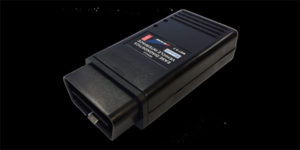There are times when all the diagnostic trees, diagrams and graphs in the world aren’t enough to properly repair a vehicle. Sometimes, you just can’t get from Point A to Point B without some homemade ingenuity — a little of that “MacGyver” magic to pull you through the next obstacle. It’s all part of that “natural mechanical ability” each one of us possesses.
Not all repairs require this unconventional method, but there are those times when it just gets the job done faster than you otherwise could. In fact, if it wasn’t for me being a little unconventional way back when, and coming up with my “MacGyver” quick-on-the-spot repair, I might have never impressed my wife.
She was a customer at the time, and had a little problem with a power window. She didn’t have a lot to spend on the repair and figured she could charm me into taking care of it. (I’ll admit it, I was a bit smitten from the get-go.) The retaining spring for one of the window motor’s brushes had snapped in half. All I had to do was find a replacement spring, but I couldn’t find a spring the right size. Then, I looked over and saw that she was patiently waiting for her car while working on a crossword puzzle with a ballpoint pen. I struck up a conversation and talked her into letting me “borrow” her pen for a minute. As I unscrewed the pen and removed the spring, I gave her a wink and told her that this little spring was all I needed to fix her car. She looked a little confused and had her doubts, but it worked perfectly — and I got a date with that pretty little gal out of it. The rest is history.
There are a lot of unconventional repairs that aren’t in any of the repair manuals you’ll read: Take, for example, heating or cooling a component to see if it is affected by temperature. If you’re following the diagnostic menu to the letter, it might tell you to check the impedance or voltage input/output when a failure occurs, but it might be just as easy to freeze that stubborn component and recheck it. I used this unconventional diagnostic method years ago to diagnose overheated ignition pickup coils and modules. While this is definitely not in any how-to manual, it did the trick. Another one is spritzing water on plug wires to see if they’ll arc, or using a test light to ground out a spark plug.
This “MacGyver” stuff isn’t anything new, either. Just ask any old-timer. They might tell you about putting a wooden clothespin on the fuel line to keep the fuel from freezing up or vapor locking on a hot day. It works on the same principle as laying a wooden spoon across a pot to keep it from boiling over. (Try it, it works!)
You never know when you might need an unconventional method to solve a problem. My wife, you know the one with the ballpoint pen spring? She recently had a knee replaced. What an ordeal — lots and lots of tests, therapy sessions and countless ice bags. Well, with the months of physical therapy over, she was still dealing with some tendonitis in one spot. Her doctor wanted to keep her on the regimen of continual therapy, but her therapist had another idea. Her therapist doubled as a licensed “dry-needle therapist,” aka an acupuncturist. After having her calf and quad muscles poked and prodded with a few dozen needles, the tendonitis problem completely vanished. While acupuncture might be an ancient form of an unconventional repair, it worked. Later, when she went back to her doctor for a checkup, he wasn’t exactly convinced that the needle treatment had anything to do with her recovery.
At the end of the day, results are what matter — not so much how you get to those results. To this day, that stuffy old doctor isn’t buying acupuncture as the reason my wife feels better. All I can say is, “Get over it, Doc. Sometimes all we need to do is think outside the box and try something a little unconventional. It just might provide the answer you’re looking for.”


